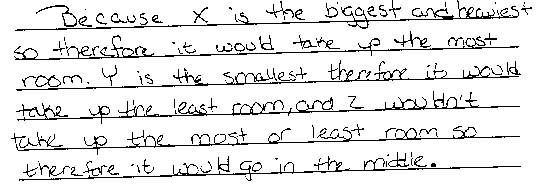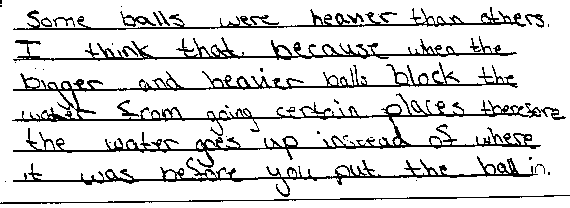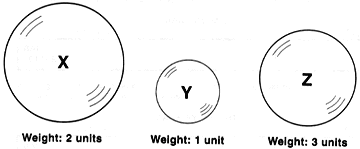 |
 |
|
|
|
|
Student #3 GENERAL INSTRUCTIONS Write your name and school name on the lines above. Do not open
this test until the directions tell you to do so. The purpose of this task is to figure out why different floating
balls put carefully into a pitcher of water make the water rise
different amounts. You will have a total of 45 minutes to complete
this task. You may use up to 30 minutes to complete the group portion
of the task.
GROUP ACTIVITY Joe and Ann were floating some balls in water. They noticed that, even though the balls floated, every ball didn't float in the same way. Then they got a pitcher with measurements on the side. They put water into the pitcher and carefully placed one ball at a time into the pitcher. They saw that some of the balls made the water rise in the pitcher more than others. Your group will help Joe and Ann find out why some balls make the water in the pitcher rise more than others. You have six balls of different sizes made out of different materials. Your job is to find out how the weight and size of each ball affects how much the water in the pitcher rises when the ball floats. Please continue the group work on page 2.




When you finish the work on this page, someone should tell the
person in charge that your group has finished its work. Then complete
the rest of the test yourself, without talking. Use the information you listed on page 2 to help you answer the rest of the questions.

 Previous Student Work | Next Student Work
|



